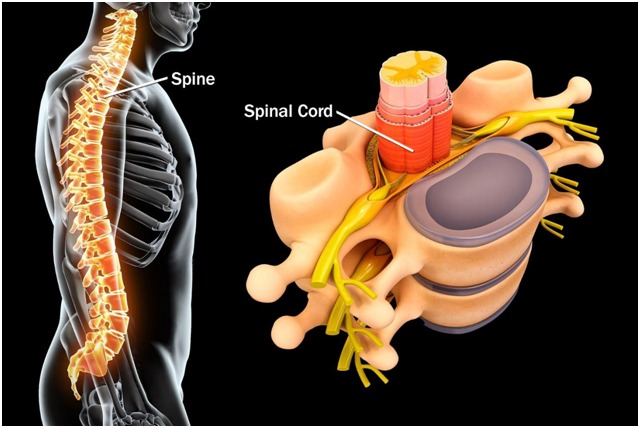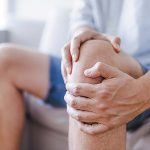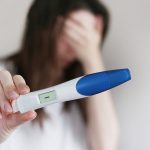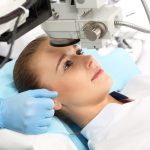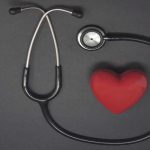We should be happy for standing straight or sitting upright, and the credit goes to our spine. Our backbone or spine is the main central support structure for our body. With the help of the spine, you can stand, walk, sit, bend, and twist.
The spine supports your upper body, shoulders, and head. And, there is lot of importance of spine in our body: The vertebrae make a tunnel for our spinal cord. This set of nerves connect our brain to our body.
As per the research conducted by the bioarchaeologists team at Simon Fraser University, the University of Sydney, and the University of Liverpool, the cause of spinal problems is linkable with the evolutionary history of humans.
Our spinal cord acts as a carrier between our brain and body & helps in transferring signals between the brain and body. The spinal cord protects our vertebrae and, if vertebrae or any other part of the spine gets damaged, it can cause spinal problems. Other common spinal problems include:
- Infections such as polio and meningitis;
- Tumours;
- Autoimmune diseases;
- Inflammatory diseases;
- Degenerative diseases;
It is crucial when it comes to having an understanding of the spinal in terms of symptoms. The symptoms are loss of sensation, muscle weakness, pain, and numbness. The symptoms can be around the spinal cord and other body parts like the legs and arms. It is recommendable to have an online neurologist’s consultation whenever you feel any issue with your spinal.
Structure & Function of Spinal in Body
The spinal cord is an integral part of the nervous system, acts as a signal carrier between brain and body, and a pipe-like structure emerging from the medulla oblongata (a part of the brain & is a collection of nerve fibers), passing through the vertebral column.
Anatomy of Spinal Cord
The length of the spinal cord is 40 cm long & 2 cm wide and is a link between the body and the brain.
Many spinal nerves are arising out of the part of the spinal cord. There are 33 vertebrae divided into five different spine parts.
- Cervical (neck)
The uppermost part of the spine with seven vertebrae (C1-C7). The cervical spine forms a concave shape and is termed as a lordotic curve.
- Thoracic (middle part of the back)
The chest of the spine with 12 vertebrae (T1-T12). Our ribs are joined to the thoracic spine, and the spine bends slightly to form a backward C-shape called a kyphotic curve.
– Lumbar (lower back)
There are five vertebrae (L1-L5) at the lower part of the spine. Our lumbar spine forms a support system for the upper parts of our spine, connecting to the pelvis and bears the weight of our body. It helps the person to carry and lift items. The concave shape formed by the lumbar spine is termed as the lordotic curve.
- Sacral
Sacral is a triangular bone connecting to our hips. There are five sacral vertebrae (S1-S5). The hip bones and sacral form a ring and is termed as the pelvic girdle.
– Coccygeal (tailbone)
The coccyx is at the tail of the spine. There are four joined vertebrae forming a small bone piece. The ligaments and pelvic floor muscles are attached to the coccygeal.
Structure of Spinal Cord
The spinal cords pass through an empty case from the skull surrounding the vertebral column. There are different regions from where the spinal cord emerges, these regions are- neck, chest, pelvic area, and abdominal.
Nerve tissue contains the white and grey matter uniformly spread across.
The white matter is a group of axons & helps to communicate between the layers of CNS. The tract carries specialized information and consists of a group of axons.
Grey matter consists of a fluid called CSF (Cerebrospinal fluid) and is made up of the central canal. There are four projections & are the main part consisting of the cells of the CNS and neurons. There are two ventral and two dorsal horns.
The spinal nerves communicate information from the spinal cord and other parts of the body to the brain.
There are three layers of meninges surrounding the spinal nerve roots & spinal cord.
- Dura mater
- Arachnoid mater
- Pia mater
There are two layers of Dura mater- meningeal and periosteal. Between the two layers is the epidural space.
The function of Spinal Cord
The main function of the Spinal Cord is:
- Eases flexible movements;
- A communicating link between PNS and the brain;
- A structural support to the body and improves body posture;
- Coordinates reflexes;
- Myelin is present in the white matter as electrical insulation;
- Transfers signals from the brain to the body parts;
- Receiving sensory information from receptors and helps the brain to process the same;
If you face any difficulties with your spinal cord anytime in life, plan an immediate online neurologist consultation.
What Causes Spinal Problems?
Spinal cord problems are caused from either inside or outside the spinal cord. If there is a spinal cord injury from the outside, the cause is compression of the spinal injury or cord. The compression in the spinal cord is due to spinal degeneration, bone fracture, or other abnormalities like a tumour, herniated disk, or hematoma.
The causes of spine disorder from inside the spinal cord are mentioned below, such as:
- Vitamin deficiency;
- Fluid-filled cavities;
- Blockage of blood supply;
- Syphilis;
- Autoimmune disease;
- Multiple sclerosis;
The other possible causes of spinal cord injuries that can lead to spine pain problems are:
- Sudden falls;
- Motor vehicle accidents;
- Sports injuries;
- Surgical complications;
- Gunshot wounds;
Symptoms of Spinal Problems
Spinal cord symptoms depend on the type & location(complete or incomplete) of the damage. The severity of the injury is termed as ‘the completeness’ and classified as below:
- Incomplete: if you face any sensory or motor function below the injured area, it is an incomplete injury. There are different types of incomplete injury;
- Complete: if you face any feeling and the ability to control any movement below the spinal cord injury, it is a complete injury;
The spinal cord injury can also cause paralysis and is referred to as below:
- Tetraplegia: when your hands, legs, arms, trunk, & pelvic organs are paralyzed by a spinal cord injury;
- Paraplegia: This type affects a part of your legs, trunk, & pelvic organs or your whole body;A neurologist will perform several tests to determine the extremity of the injury based on the symptoms of the lower back pain.
The following are the symptoms & signs of spinal cord injuries are:
- Loss of bladder control or bowel movements;
- Loss of movement;
- Exaggerated spasms or reflex activities;
- Loss of sensation likeability to feel cold, touch, or feel the heat;
- Coughing or difficulty in breathing;
- Changes in sexual sensitivity & sexual function;
Types of Spinal Problems
There are many types of spine problems affecting the human body from the neck portion to the lower back. The different types of spinal problems are:
- Slipped Disc;
- Pinched Nerve;
- Bulging Disc;
- Spinal Stenosis;
- Degenerative Disc Disease;
Slipped Disc
Slipped disc or herniated disc is one of the common spine problems in humans. It is a condition when the soft material inside the disc gets pressed through a tear in the tougher exterior part. It can also harm the nearby nerves leading to pain and other symptoms. Slipped disc in the back is the most common spinal problem faced.
The symptoms of a slipped disc can differ for different people. These symptoms are as below:
- Leg pain;
- Arm pain;
- Tingling;
- Numbness;
- Weakness;
There are many options suggested by a neurologist for slipped disc treatment and, includes non-surgical treatments like:
- Massage therapy
- Cold & hot therapy
- Acupuncture
- Physical therapy
- Steroids injections
- Yoga
- Medications
Pinched Nerve
A slipped disc is one of the reasons for pinched nerves and generally occurs throughout your body.If you have a slipped disc problem in your lower spine, it may cause pressure on the nerve root, which can further boost the pain at the back of your leg.
Symptoms of a pinched nerve are:
- Weak muscles;
- Feels like limbs have fallen asleep (legs, hands, or feet);
- Numbness in the pinched nerve areas (depends whether you have a pinched nerve in the neck, pinched nerve in shoulders, or pinched nerve in any other part of the body);
- Needles sensation in the pinched nerve areas;
- Aching and burning boosting outward;
Pinched nerves can be caused by many factors like:
- Injuries;
- Bone spurs;
- Slipped disc issue;
- Illnesses like thyroid, rheumatoid, or diabetes;
- Obesity;
- Hobbies;
A physician can suggest options for pinched nerve treatment like physical therapy, corticosteroid injections, and surgery can also be advised.
Bulging Disc
Bulging discs and slipped discs are different back disc problems, but many times people get confused with both of these problems.
If you have a bulging disc in the back, a bulge is developed along with the surroundings of your discs, and the tough membrane is not torn. This bulge can be along the side portions of the rear portions of your discs, which can create pain and pressure on the nerve. The same thing can happen when you suffer from a bulging disc in the neck.
The symptoms for the bulging disc can be:
- Difficulty in walking
- Heaviness
- Pain and numbness
- Burning sensation
- Tingling
- Weakness
Depending on the pain and the affected areas, bulging disc treatments are suggested. Back strain, neck strain, age, accidents, and genetic factors can cause bulging discs. The treatments can be:
- Hot & cold therapies
- Lifestyle changes
- Complete bed rest
- Prescribed medicines
- Chiropractic care
- Steroid injections
- Stretching exercise
- Weight loss
- Spinal decompression therapy
Spinal Stenosis
Spinal stenosis is caused when the open spaces of your spine narrow down. It is most commonly affected in the neck and the lower back. When a person suffers from spinal stenosis, there is immense pressure on the nerves that travels down the spine and causes different uncomfortable symptoms. It can also get worst and increase over time.
The symptoms of spinal canal stenosis are different and vary on the location of the narrowing down of the spine. If you face this problem in the neck (cervical spine), the symptoms can be:
- Pain in the neck
- Difficulty in walking
- Loss of bladder control or bowel movement, when the pain is severe
- Tingling and numbness in arms, feet, legs, or hands
- Weakness in your legs, arms, feet, or hands
If you face this problem in the lower back (lumbar spine), the symptoms can be:
- Weakness in leg or foot
- Back pain
- Tingling or numbness in a leg or foot
- Cramping or pain in both or any one of the legs while standing or walking
Senior citizens above 50 years are at a higher risk of spinal stenosis. The doctors can give the best options for spinal stenosis treatment such as:
- Physical therapy
- Hot & cold therapy
- Prescribed medicines
- Steroid injections
- Lumbar decompression procedures (Endoscopic Laminotomy/ Vertiflex)
In some extreme cases, surgeries for spinal stenosis are the only solution to provide you better relief from the pain.
Degenerative Disc Disease
As a person ages, the discs in your spine begin to wear. Degenerative disc disease is not a disease, but a condition caused when your discs damages and later causes pain. It can be due to the low blood supply in your discs, and it is not possible to repair them.
If you have degeneration disease, the symptoms can be the following:
- Weakness in your muscles, especially legs
- Tingling and numbness in the arms or legs
- Severe pain can last for days or months
- Contractions in the lower back
- Pain in the legs and the lower neck
One of the primary causes of degenerative disc disease is the natural aging process, the discs worsen as a person ages. Many other factors can also damage the discs like obesity, poor posture, frequent lifting, sports accidents, traumatic injuries, twisting, and more.
Doctors can suggest many degenerative discs disease treatments to reduce the pain. These are:
- Hot & cold therapies
- Massage therapy
- Physical therapy
- Prescribed medications
- Epidural steroid injections
Medical Treatments for Spinal Problems
Many times, spinal problems get better with home treatments only. The other spinal problems treatments can be prescribed medicines by doctors, heat therapies, physical therapies, muscle relaxants, narcotics, antidepressants, cognitive behavioural therapy, complementary therapies (acupuncture, shiatsu, yoga), Transcutaneous electrical nerve stimulation (TENS), and in worst cases, surgical treatments for spinal problems is recommendable.
Like all surgical procedures, there can be a risk of spinal surgery complications too. These can be blood clots, infections, Dural tear, infections, persistent pain, lung problems, and bleeding.
It is always recommendable to take an online neurologist consultation when a person starts feeling any of the above symptoms for a quick treatment.
Mediflam: Online Neurologist Consultation
Spinal problem is a serious issue that can disable people for days, months, and years too. The above-mentioned causes and symptoms are the most common; hopefully, this can help you understand whatever spinal problems you are experiencing.
If you face any issue with your spinal canal, do not hesitate and take an online neurologist consultation with us by booking an appointment at Mediflam.
FAQ’s Regarding Spinal Problems
What are the symptoms of spinal problems?
The spine problems symptoms are back pain, neck pain, weakness, paralysis, loss of bowel movements, numbness & tingling in hands, fingers, or toes, problems with walking, and more.
How do you treat spinal problems?
The treatments for spinal problems can differ from the pain a person is experiencing. Some of the common treatments suggested by doctors are physical therapy, hot & cold massage therapy, acupuncture, mild exercises and stretching, prescribed medications, and, in extreme cases, surgery is also advisable.
How do you know if something is wrong with your spine?
When you experience extreme pressure in your neck, head, or back, paralysis in any body part, weakness, numbness, or tingling in your fingers, feet, or hands, it is an indication to get immediate treatment for spinal problems.
What causes spinal disorders?
The causes of spinal disorders may include slipped discs, thickened ligaments, tumours, spinal injuries, and overgrowth of bone.
What are three spinal diseases?
There are three types of spinal diseases– Lordosis, Kyphosis, & Scoliosis.

